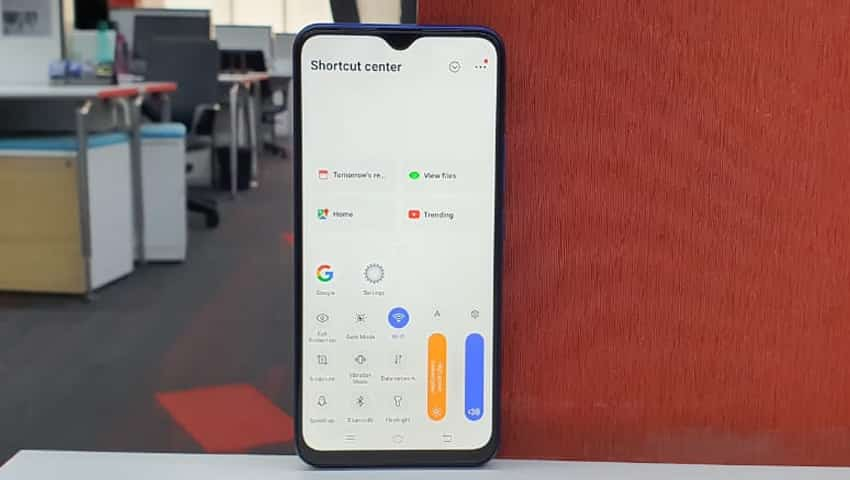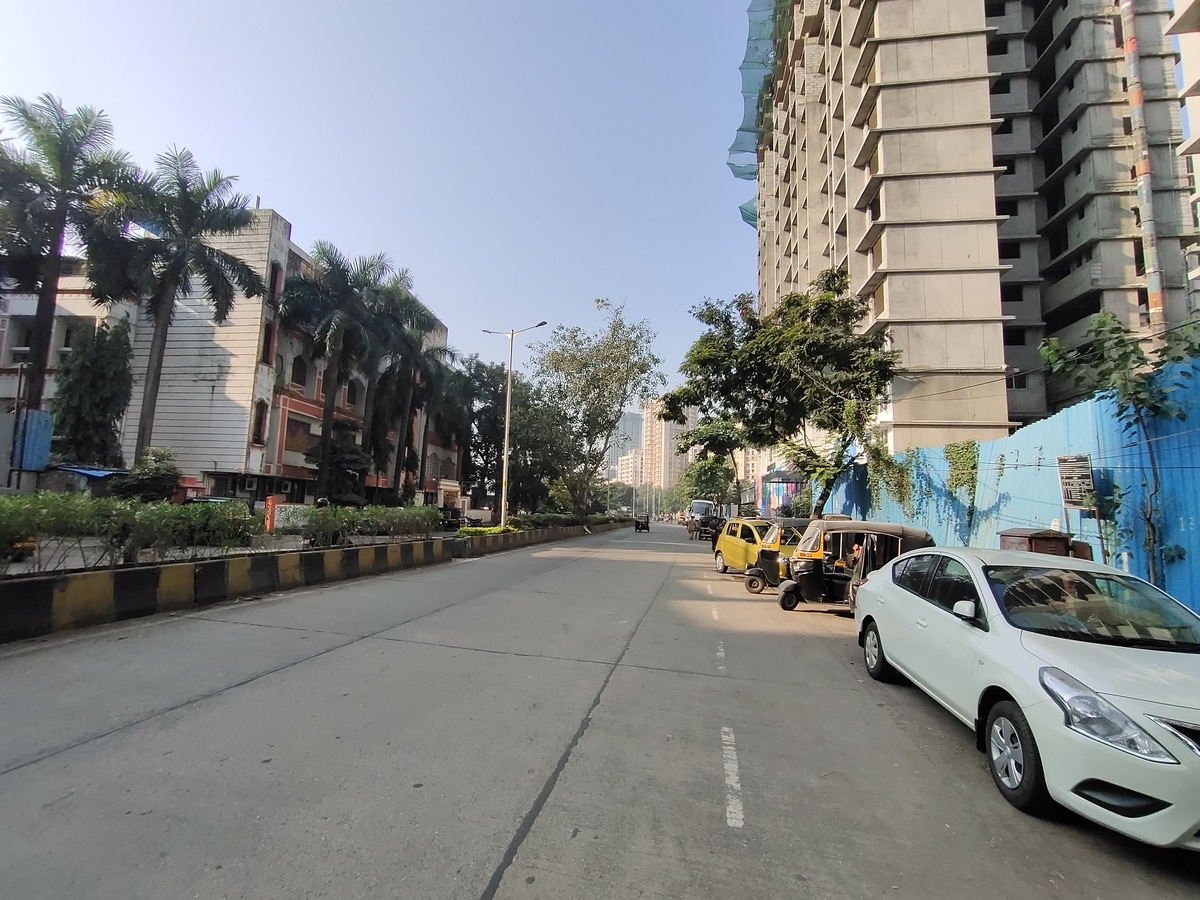Vivo U20 Review
Vivo U20 Review
Vivo U20 might just be the most powerful smartphone around Rs. 10,000
Vivo brought the Vivo U10 in India in late September to compete with Xiaomi and Realme at the budget end of the market. The Vivo U10 is powered by the same Qualcomm Snapdragon 665 processor as the Redmi Note 8 and the Realme 5. With the competition churning out phones at such a high rate, it was time for Vivo to push out an update, and now it has, with the Vivo U20. The naming clearly suggests that this is a higher-end model than the Vivo U10, and we are expecting this smartphone to keep the competition in the market alive.
Equipped with a powerful Snapdragon 675 SoC, this phone could have an edge over its competition. Will this be enough to sway your choice in its direction? We put the Vivo U20 to the test to find out.
Vivo U20 Design
When we got our hands on the Vivo U10₹ 8,990 (Review) we had pointed out that it was boxy and bulky. The new Vivo U20 isn't a whole lot different, as it weighs 193g and is 8.9mm thick. We think that some people will find it too unwieldy for daily use. The display has grown in size, and the IPS LCD panel on the Vivo U20 measures 6.53 inches. It has thin bezels on the sides and Vivo claims a screen-to-body ratio of 90.3 percent. We found the display bright enough when outdoors, and it had decent viewing angles. Vivo has opted for a full-HD+ panel which is a welcome upgrade over the HD+ display of the U10.
The back of the Vivo U20 is flat but the sides are rounded which helps when holding it in the hand. Vivo has opted for a plastic back panel and frame. The back panel has a glossy finish which makes it a fingerprint magnet. We had to constantly wipe the back of the smartphone, and ultimately, we decided to use the bundled case to prevent smudges.
The glossy finish on the back of the Vivo U20 looks gorgeous but is a fingerprint magnet
We found the power and the volume buttons to be positioned a little too high for comfort, and they needed a bit of a shuffle to reach. The rear-mounted fingerprint scanner is also positioned slightly too high for our liking. Vivo still uses a Micro-USB port on the U20, which should've been dropped in favour of USB Type-C. The 3.5mm headphone jack and the loudspeaker are placed on either side of the Micro-USB port, along with the primary microphone.
The smartphone packs a triple camera setup at the back, placed in a module which is slightly raised.
Vivo U20 specifications and software
The Vivo U20 does boast of some impressive hardware, with the highlight being the Qualcomm Snapdragon 675 SoC. This is the same processor that powered the Redmi Note 7 Pro₹ 11,389 (Review) which was launched earlier this year at a higher price. It packs quite a punch, and people looking to play games and multitask should be able to do so on the Vivo U20 without any issues. The competition at this price level, including the Realme 5₹ 9,499 (Review), and the Redmi Note 8₹ 9,999 (Review), use the relatively less powerful Snapdragon 665 SoC.
Vivo has matched this SoC with 4GB or 6GB of RAM, while storage is 64GB for both variants. Surprisingly, Vivo offers UFS 2.1 storage which helps while transferring files to and from the smartphones. Storage is expandable by upto 256GB using a microSD card.
Vivo has priced the base 4GB RAM variant at Rs. 10,990 while the 6GB RAM variant is priced at Rs. 11,990. You also get two colour options to choose from, Racing Black and Blaze Blue. We had the Racing Black variant for this review, which we liked. If you prefer gradient finishes, then Blaze Blue is the one for you.
The Vivo U20 gets a full-HD+ display with a waterdrop notch
Connectivity options on the Vivo U20 include Bluetooth 5, dual-band Wi-Fi, four satellite navigation systems, and FM Radio. Vivo has packed a 5,000mAh battery into the U20, and supplies an 18W Dual-Engine fast charger in the box.
Vivo ships the U20 with Funtouch OS 9.2 running on top of Android 9 Pie. There is a lot of preinstalled bloatware. You get apps such as EasyShare, GameCenter, Gaana, Amazon Shopping, Helo, Dailyhunt, Opera, Facebook, WhatsApp, WPS office and one called iManager. Some of them are super spammy with notifications, and it would be better to simply uninstall them.
Funtouch OS requires you to swipe up from the bottom of the screen for the quick toggles which is the exact opposite of the action for every other Android smartphone. This can get annoying and confusing for the user. Vivo has baked in a few other customisations as well. Users can change the UI theme as well as the animations for charging and face recognition.
Vivo's smart assistant Jovi is also built into the smartphone. It can help you recognise products you point the camera at, and reminds you to drink water throughout the day. There is Google's Digital Wellbeing as well as parental controls, which help you manage how you spend your time on the smartphone. Smart features such as raise-to-wake, and the ability to quickly launch apps by drawing alphabets on the lock screen, are also available.
Vivo offers a Motorbike mode which rejects all incoming calls when you are in motion, and sends an SMS automatically to callers.
There is support for dual 4G VoLTE as well as a dedicated microSD card slot.
We played PUBG Mobile on the Vivo U20, which defaulted to the High preset with graphics set to HD and the frame rate set to High. We did not notice any issues at these settings and could play the game well. Just like we've experienced with other phones powered by the Snapdragon 675, the Vivo U20 did get slightly warm to the touch after gaming for around 20 minutes. We also noticed a battery drop of 5 percent over the same duration.
Battery life for the Vivo U20 is quite good, and this smartphone can last over a day and a half easily on a single charge. With our usage which consisted of an active WhatsApp account, playing PUBG Mobile, taking a few camera samples, and using GPS for navigation, we were left with 45 percent at the end of 24 hours. In our HD video loop test, the smartphone managed 14 hours and 59 minutes.
Charging the 5,000mAh battery does not take long. The supplied fast charger got us up to 33 percent in half an hour and 67 percent in an hour. A full charge will take around two hours.
Vivo U20 cameras
Vivo has gone with a triple camera setup for the U20, which consists of a 16-megapixel primary camera with a Sony IMX499 sensor, an 8-megapixel super-wide-angle camera, and a 2-megapixel macro camera. For selfies, it has a 16-megapixel camera. The camera application is similar to what we have seen on recent Vivo smartphones. It has Night, Portrait, Pano, Live Photo, Pro, AR Stickers, and Time-Lapse modes to shoot with. It has a Jovi feature as well, which uses Vivo's Jovi assistant to identify what the camera is pointed towards and find e-commerce listings for similar products.
There are quick toggles for HDR, and different filters which can be applied before taking a shot. The camera app offers a toggle for 2x zoom which the phone does digitally. There are separate toggles to switch to the wide-angle and super macro cameras which we feel should have been integrated better.
The Vivo U20 is quick to lock focus and set the exposure right, it also enables HDR automatically when shooting in bright environments. Photos taken with the Vivo U20 looked good, but did not have the best details. This was evident on zooming in to them, and we could see slightly grainy output. The wide-angle-camera does deliver a wider field of view but we could see distortion at the edges, and the sensor failed to capture details.
Photos shot using primary (above) and wide-angle (below) cameras on the Vivo U20
up shots fared better, as the phone managed good detail and a natural depth of field between the subject and the background. Portraits had good edge detection and the U20 blurred the background correctly, but you don't get the option to set the level of blur in this mode. There is a separate Bokeh mode that lets you control this, and we think these two should have been combined. Photos taken from the macro camera were good but restricted to 2-megapixels in resolution.
Low-light camera performance isn't great. The Vivo U20 missed out on details and delivered grainy output. Switching to Night mode did result in brighter images but they weren't significantly better. The phone keeps the shutter open for longer, so you will need to be steady while taking a shot in this mode. The overall quality of the cameras was nowhere near the best we've seen in this price range.
Selfies shot indoors were also below average in quality and you will notice grain on zooming in. It's best to limit these selfies to casual social media sharing.
Video recording maxes out at 4K for the primary camera and 1080p for the selfie shooter. We found video stabilisation to be adequate when shooting in the day, but focusing speed could have been better. In low light, there was a significant shimmer effect which was also visible in the viewfinder while shooting.
Verdict
Vivo stirred up the competition when it launched the U10 in the sub-Rs. 10,000 market and the company is repeating that at a slightly more premium positioning with the Vivo U20. This new smartphone packs in powerful hardware and a big battery at an aggressive price. That said, the U20 isn't a perfect all-rounder; the cameras did leave us wanting.
If you are looking for a device primarily for gaming then the Vivo U20 should be pretty high on your shortlist. You could also consider the Realme 5s and the Redmi Note 8 (Review) as possible alternatives to the Vivo U20.
Vivo U20 Review
![]() Reviewed by Battle series
on
December 10, 2019
Rating:
Reviewed by Battle series
on
December 10, 2019
Rating:






No comments: